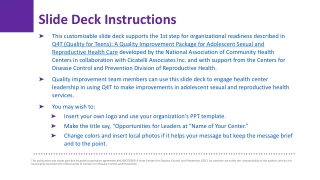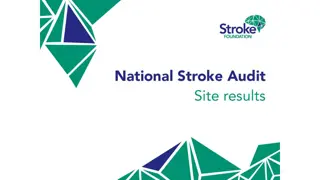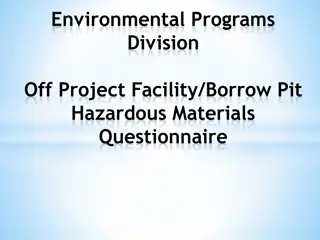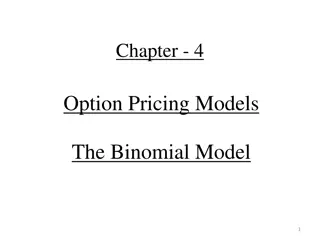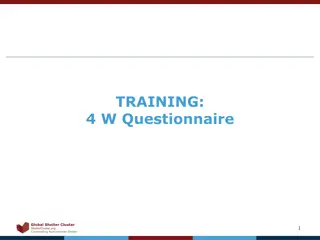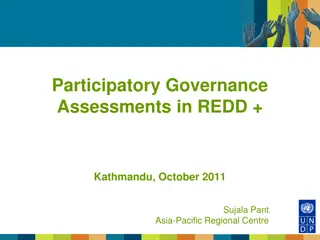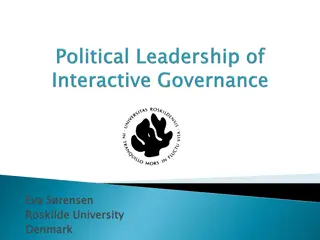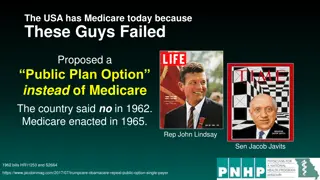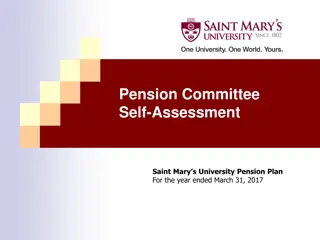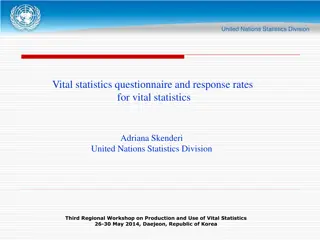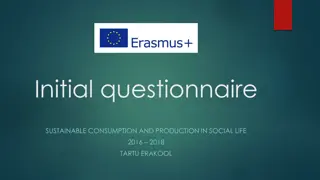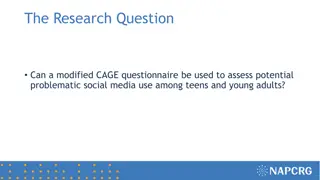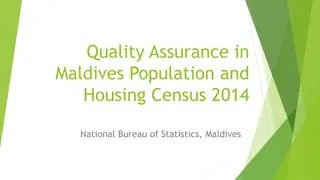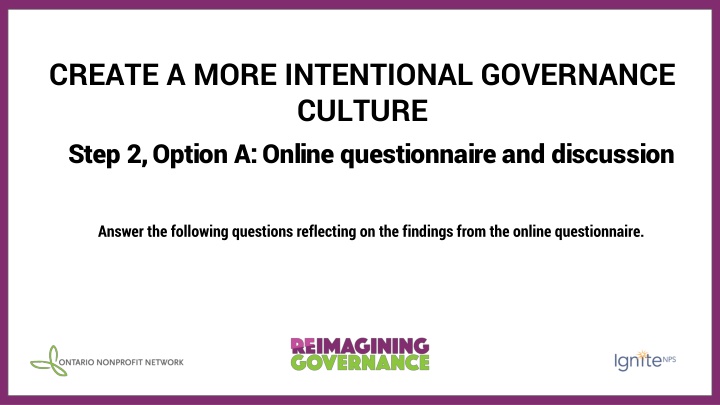
Creating an Intentional Governance Culture: Reflective Conversation Guide
Explore the findings of an online questionnaire to reflect on your current governance culture, uncover surprises, identify agreement and differences in responses, assess the governance work environment, and understand influencers shaping governance choices and decisions.
Download Presentation

Please find below an Image/Link to download the presentation.
The content on the website is provided AS IS for your information and personal use only. It may not be sold, licensed, or shared on other websites without obtaining consent from the author. If you encounter any issues during the download, it is possible that the publisher has removed the file from their server.
You are allowed to download the files provided on this website for personal or commercial use, subject to the condition that they are used lawfully. All files are the property of their respective owners.
The content on the website is provided AS IS for your information and personal use only. It may not be sold, licensed, or shared on other websites without obtaining consent from the author.
E N D
Presentation Transcript
CREATE A MORE INTENTIONAL GOVERNANCE CULTURE Step 2, Option A: Online questionnaire and discussion Answer the following questions reflecting on the findings from the online questionnaire. Conversation guide
Governance culture reflective conversation The intent of the conversation is to: Reflect on the summary snapshot of your current governance culture and what can be learned from it. This reflection is an important building block for envisioning your desired governance culture and an important baseline to measure change. It s important not to judge responses or engage in an in-depth evaluation. It s purpose is to capture this moment in time and to generate insights as you move forward to create a more intentional governance culture.
Governance culture reflective conversation - Some helpful definitions Governance (generic): Governance determines who has a voice in making decisions, how decisions are made and who is ultimately accountable. The role of governance in nonprofit organizations: Governance provides stewardship, sensemaking and foresight that advance the organization s purpose. Governance leadership takes responsibility for building and sustaining stakeholders confidence in the organization s integrity, legitimacy and viability. Governance leaders: People who are actively engaged in shaping or influencing governance work. Commonly, this includes at least the board directors and leadership staff, and may include other stakeholders such as other volunteers from the community, the communities served by the organization and collaborative partners. Governance culture: The culmination of values, mindsets, and ways of interacting and how that shapes or manifests in an organization s approach to governance.
Governance culture Reflective conversation questions 1. Were there any surprises in the results? If so, why? 2. Where is there significant agreement and where are there big differences in responses? What might be the reasons?
3. Based on responses, how would you describe the governance work environment? Consider: Comfort with participation in discussion and decisions and feel well informed to make good governance decisions. Board and CEO/ED partnership. The way that thorny issues and tough decisions are handled. Diversity of those who are participating in governance.
4. Based on responses, what influencers are shaping our governance choices and decisions?Consider: Opportunities to explore governance leader s values, mindsets and life experiences and how they influence approaches to governance. Meaningful conversations/actions about equity, anti-racism, and anti- oppression. Comfort with all three kinds of governance work fiduciary, strategic and generative. How working virtually shapes relationships and decision-making. What seems to matter most to governance leaders.
5. How engaged are stakeholders in our governance? For example, stakeholders are: CEO/ED, other staff leadership, communities we serve, staff members, and collaborative partners Who s actively involved in our governance and how? To what degree are their contributions valued? Do we have strategies that address real and perceived barriers to participation? What currently helps and what hinders stakeholders having a voice in governance?
6. How much of our culture is clearly understood and named and how much is more informal (e.g. habits, norms, personality-driven)? 7. Is there anything about our culture that hasn t yet surfaced that s important? 8. To what degree do we have the right governance culture in place and where are the areas we d like to see really strengthened?

